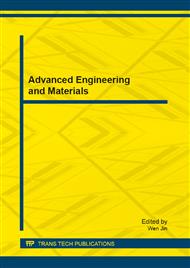[1]
Zhu J L. Scientific engineering calculations and Computational Mathematics. Discovery of Nature, Sichuan Science Press, Sichuan, (1991).
Google Scholar
[2]
Stroud J S, Berger S A, Saloner D. Influence of Stenosis Morphology on Flow through Severely Stenotic Vessels: Implications for Plaque Rupture[J]. Journal of Biomechanics, 2000, 33: 443-455.
DOI: 10.1016/s0021-9290(99)00207-9
Google Scholar
[3]
M Oshima, R Torii, T Kobayashi. Finite Element Simulation of Blood Flow in the Cerebral Artery[J]. Computer Methods Appl Mech Engng, 2001, 191: 661-671.
DOI: 10.1016/s0045-7825(01)00307-3
Google Scholar
[4]
De Hart J, Baaijens F.P. T, Peters G.W. M, et al. A Computational Fluid-structure Interaction Analysis of a Fiber-reinforced Stentless Aortic Valve[J]. Journal of Biomechanics, 2003, 36(5): 699-712.
DOI: 10.1016/s0021-9290(02)00448-7
Google Scholar
[5]
H. F. Younis, M. R. Kaazempur-Mofrad, R. C. Chan, et al. Hemodynamics and Wall Mechanics in Human Carotid Bifurcation and Its Consequences for Atherogenesis: investigation of inter-individual variation[J]. Biomechan Model Mechanobiol 2004, 3: 17-32.
DOI: 10.1007/s10237-004-0046-7
Google Scholar
[6]
Yung C N, Kenneth J. De Witt, S Subramanian, et al. Three-dimensional Pulsatile Flow through a Bifurcation[J]. International Journal of Numerical Methods for Heat & Fluid Flow, 1997, 7(8): 843-862.
DOI: 10.1108/09615539710193010
Google Scholar
[7]
Zienkiew icz OC,Bettess P. D rained. Fluid-structured dynamic interaction and wave forces,an introduction to numerical treatment[J]. Int. J. Num. Meth. Engrg,13,l(1978): l-16.
DOI: 10.1002/nme.1620130102
Google Scholar
[8]
Zhang L, Wang F J, Wang L, et al. The Structure Design of Branch Endovascular Graft by Fluid Mechanics[C]. Proceedings of 2010 International Forum on Biomedical Textile Materials, Donghua University, Shanghai, May 28-29, 2010, 441-444.
Google Scholar
[9]
Tao Z L. Biological fluid dynamics, Beijing Science Press, (1984).
Google Scholar
[10]
D.A. Mcdonald. The flow of blood in the artery. Beijing Science Press, (1982).
Google Scholar
[11]
Gu Y, Li M Y, Shen LX. Finite element analysis of stenosed artery-blood coupling model in Ansys/CFX [J]. Journal of Clinical Rehabilitative Tissue Engineering Research, 2008, 12(52): 10293-10296.
Google Scholar
[12]
Yang J J. Polyurethane medical materials, Chemical Industry Press, Beijing, (2008).
Google Scholar
[13]
Wang F L. Individualized Hemodynamics Model and Experimental Verification of the Intracranial Aneurysms Based on Computational Fluid Dynamics Technique. Neurosurgery of PLA Postgraduate Medical School, Beijing, (2008).
Google Scholar
[14]
Li Z H. Computational Analyses and Simulations of Fluid-Structure Interactions Applied to Stented Abdominal Aortic Aneurysms[D]. Ph. D, Raleigh, North Carolina State University, (2005).
Google Scholar
[15]
Xiong J, Jing Z P, Wu J G. Construction of Stress Model of Abdominal Aortic Aneurysm and Its Application. HChinese Journal Of Biomedical EngineeringH, 2005, 24(2): 203-205.
Google Scholar


